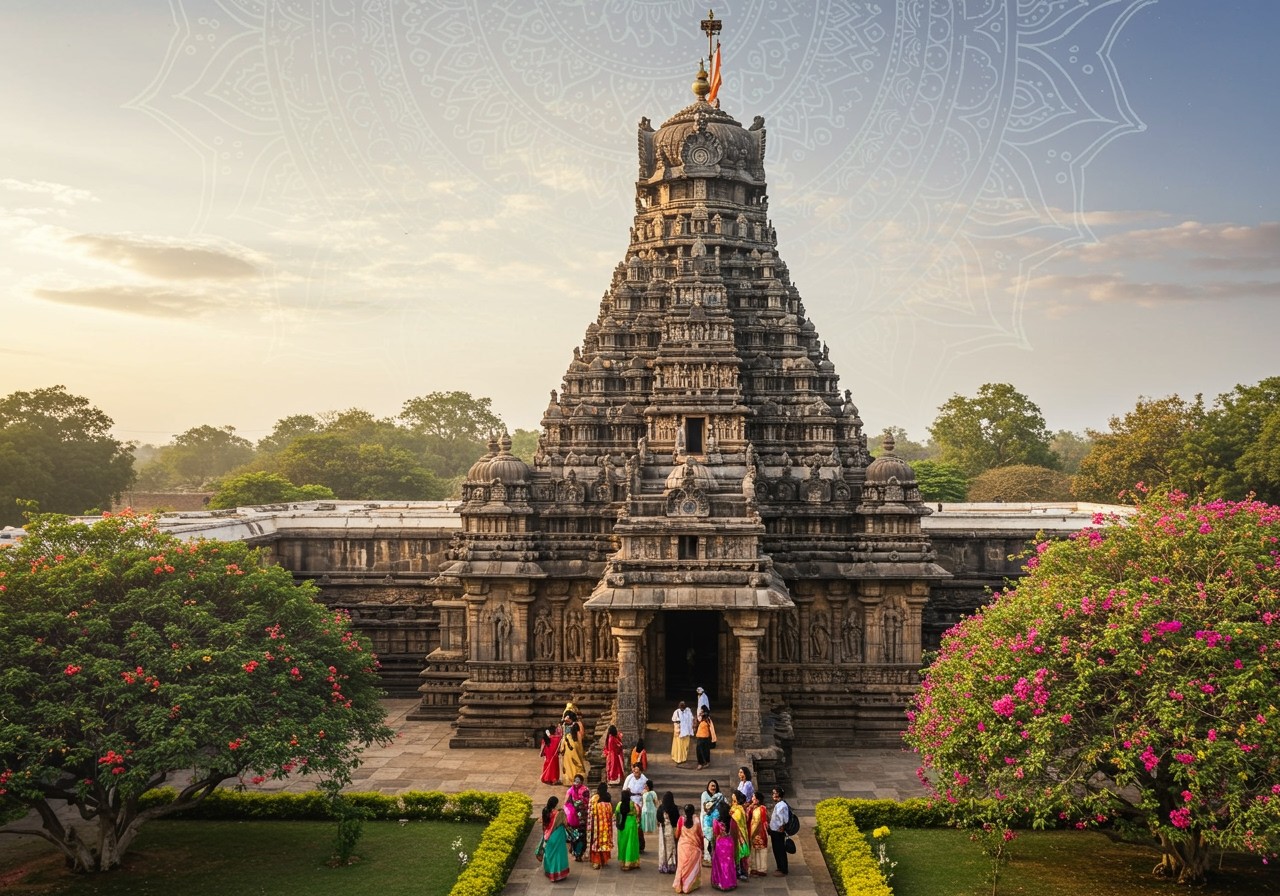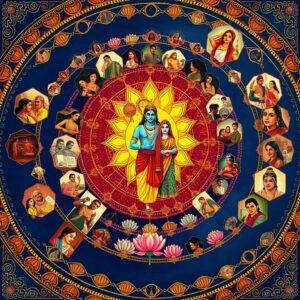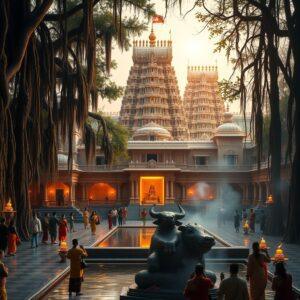
Nestled in the heart of South India, the Chennakesava Swamy Temple stands as a testament to the region’s rich heritage and architectural brilliance. This guide provides all the information you need to plan your visit, including historical insights, architectural marvels, rituals, essential travel tips, and more. The Chennakesava Swamy Temple is not merely a place of worship; it embodies cultural significance for many Indians who cherish tradition and heritage.
Historical Background
The Chennakesava Swamy Temple, also known as the Vijayanarayana Temple, was constructed in the 12th century by the Hoysala Empire. King Vishnuvardhana commissioned it to commemorate his victory over the Cholas. The temple exemplifies Hoysala architecture, distinguished by intricate carvings, star-shaped platforms, and soapstone construction. It holds profound historical importance, particularly within the context of the Bhakti movement and its dedication to Lord Vishnu. Legends surrounding the temple narrate tales of its construction and miracles attributed to it. For more in-depth information, you can explore resources like Chennakesava Temple History.
Architectural Features
The architectural brilliance of the Chennakesava Swamy Temple is truly captivating. The temple layout encompasses the Garbhagriha (sanctum sanctorum), Sukhanasi (vestibule), and Mahadwara (main entrance). Detailed sculptures adorn the temple walls, depicting scenes from the Ramayana, Mahabharata, and other Hindu epics. The unique star-shaped platform is a hallmark of Hoysala architecture. Inside, ornate pillars are renowned for their intricate carvings and polished finish. The use of soapstone enabled the detailed artistry evident in the temple’s sculptures.
Rituals and Traditions
A variety of rituals and traditions are observed at the Chennakesava Swamy Temple. The daily pooja schedule includes Abhishekam (ritual bathing of the deity) and Alankaram (decoration of the deity). Major festivals celebrated at the temple include Vaikunta Ekadashi, Brahmotsavam, and Janmashtami. Visitors are requested to adhere to a traditional dress code and etiquette to maintain the sanctity of the sacred space. Special darshan tickets offer advantages such as reduced waiting times and guided tours. The temple’s priests and volunteers play a vital role in preserving the sanctity and ensuring the smooth operation of the temple activities. You can find details about temple visits at Chennakesava Temple Visits.
Planning Your Visit
For a seamless visit to the Chennakesava Swamy Temple, consider these essential tips:
- Best Time to Visit: The period from October to March offers pleasant weather. Consider checking the Chennakesava Temple Weather before your trip and try to avoid peak tourist seasons and major festivals for a more tranquil experience. This will allow you to fully appreciate the temple’s serene atmosphere and intricate details.
- How to Reach: The nearest airports are in Bangalore and Mysore. The closest railway station is Hassan. Well-connected roads and frequent bus services make the temple accessible. Check How to Reach Chennakesava Temple for detailed directions and transportation options.
- Accommodation: A range of options are available, from budget-friendly hotels to luxurious resorts. Booking in advance is recommended, especially during festival periods. Consider exploring options in nearby cities like Hassan or Mysore for a broader range of choices.
- Nearby Attractions: Enhance your trip by visiting nearby attractions like the Keshava Temple at Somanathapura and the Hoysaleswara Temple at Halebidu to fully appreciate the beauty of Hoysala architecture. You can also research related sites through Chennakesava Temple searches.
- Practical Advice: Dress modestly in traditional attire, wear comfortable footwear, and consider bringing offerings like flowers or incense. Respect the temple’s sanctity and follow the guidelines provided by temple authorities.
Cultural Significance
The Chennakesava Swamy Temple plays a significant role in promoting and preserving Hoysala architecture and art. It influences local culture through traditional crafts, music, and dance forms associated with temple festivities. The temple contributes to the local economy through tourism and supports local artisans through the sale of traditional handicrafts. It fosters a sense of community, identity, and continuity for devotees.
Shopping and Souvenirs
Enhance your visit by purchasing authentic ritual items and souvenirs. Local markets offer traditional items such as brass lamps, incense, and temple jewelry. Miniature replicas of temple sculptures and handcrafted artifacts make unique souvenirs reflective of the temple’s heritage. When shopping, remember to bargain respectfully and ensure the authenticity of the products. Online options are also available at poojn.in for those who prefer to purchase ritual items before or after their visit. Support local artisans and craftsmen by choosing handmade products.
Prepare for Your Spiritual Journey with Poojn.in
Visiting a temple is a deeply spiritual experience, and Poojn.in can help you prepare for your visit to the Chennakesava Swamy Temple with authentic puja samagri. Our collection includes items like:
- Vastram and Dhoti Sets: Dress respectfully in traditional attire with our pure cotton vastram and dhoti sets, perfect for temple visits. Explore our collection.
- Pooja Items: Enhance your offerings with traditional brass and copper pooja items crafted with intricate details. Find your perfect items.
- Offerings: Convey your devotion with fresh flower garlands, dried flowers, pure ghee for deepam, coconuts, fruits for prasadam, camphor, and traditional agarbatti. Shop now.
Conclusion
A visit to the Chennakesava Swamy Temple is a journey through time, art, and devotion. This guide equips you with the necessary information for a memorable and enriching experience. Whether a spiritual seeker or history enthusiast, this temple offers something unique for everyone. Plan your visit thoughtfully, respect the rituals, and immerse yourself in the serene beauty of this magnificent temple.
FAQs
What are the temple timings? The Chennakesava Swamy Temple is generally open from 9 AM to 5:30 PM. However, it’s always recommended to check the latest timings from official sources or the temple’s website before your visit, as they may vary due to special events or seasonal changes.
Where is the temple located? The temple is situated in Somanathapura, Karnataka, India. You can find its precise location and directions using online maps or navigation apps.
Is there an entry fee? While there is typically no entry fee for general darshan, some temples may charge a nominal fee for special darshans or access to specific areas. It’s advisable to check with the temple authorities for the latest information.
Can I take photos inside? Photography restrictions vary from temple to temple. Some temples may allow photography within the premises but prohibit it inside the inner sanctum. Always respect the rules and guidelines displayed at the temple.
Is there a dress code? Most temples require visitors to dress modestly. Traditional Indian attire is generally preferred. Avoid wearing shorts, sleeveless tops, and revealing clothing. It’s always respectful to cover your head when entering the temple.
When is the best time to visit? The best time to visit is during the cooler months, from October to March, when the weather is pleasant. Avoid visiting during peak summer months or major festivals if you prefer a less crowded experience.
How can I reach the temple? The temple is well-connected by road. You can reach Somanathapura by bus or hire a taxi from nearby cities like Mysore or Bangalore.
What other attractions are nearby? Several other historically significant temples and sites are located near Somanathapura, including the Hoysaleswara Temple in Halebidu, the Shravanabelagola shrines, and the ancient city of Mysore with its magnificent palace.


